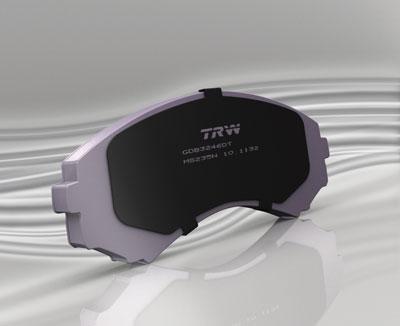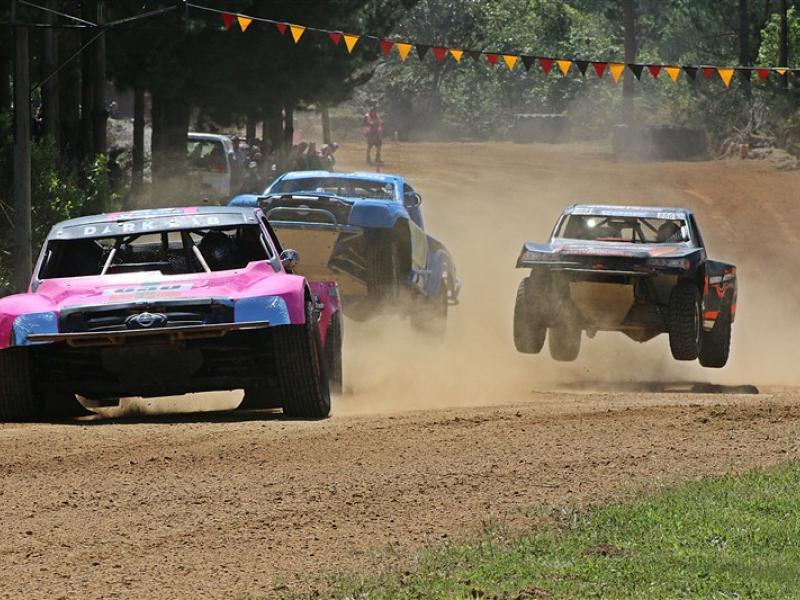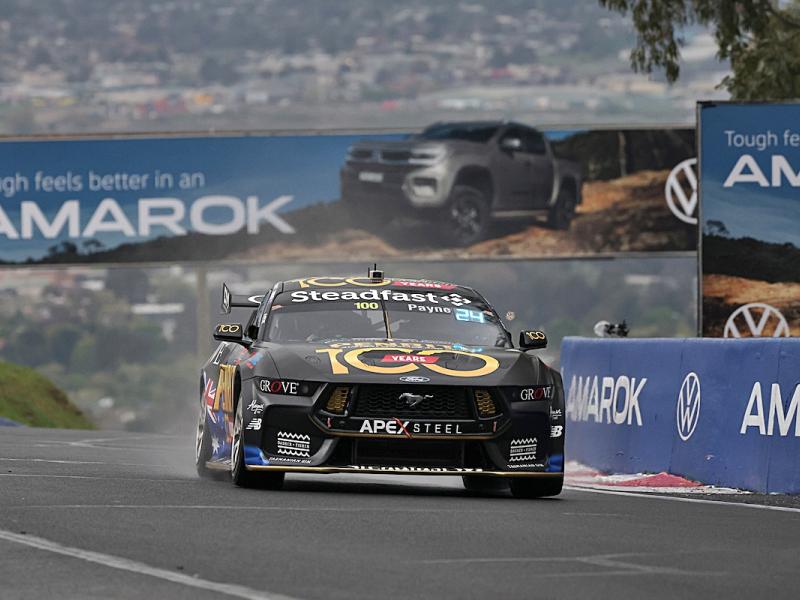|
Brakes are one of a vehicles most important safety features yet many motorists fail to understand why they should fit the best brake pads they can afford and why their vehicle should be tested regularly. Robert Barry spoke with industry players about brake pads and brake testers.
Acknowledgments to: Remsa, Bendix, TRW, MAHA, BM Autoteknik, and Platetronics for technical information and assistance.
Shaking up the industry
One of the biggest changes in the world of aftermarket brake pad manufacturing was the introduction by the European Union (EU) of its ECE R-90 regulation at the end of March 2001. This new ruling has since forced other governments and manufacturers to ban the use of asbestos in brake pads resulting in the development of ceramic brake materials.
The ECE R-90 regulations covered the performance, mechanical characteristics, packaging and production of all brake pads manufactured in Europe from 31 March 2001 and any pads made after this date which did not comply could not be sold in Europe.
The EU regulations dictated that brake pads must perform within 15 percent (above or below) OEM performance and that the pads tear shear strength must be 250N/cm2 and compressibility must not exceed five percent of its thickness at 400 degrees Celsius.
Production and raw material control plus tamper proof packaging with label and pad marking were also part of the ECE R-90 regulations. This was a long and costly process for brake pad manufacturers such as Remsa. It says that it spent approximately 8000 Euro per part number for homologation.
The road testing process for ECE R-90 used vehicles for which the brake pads were applicable fitted with sensors to detect pressure in the brake circuit, pedal strength, and disc temperature and vehicle deceleration.
The aim of ECE R-90 was to test for correct response in different driving situations by braking suddenly at various speeds and with various loads onboard the vehicle. The brake response was also tested in emergency conditions and parking situations.
Performance of the pads was tested over ten consecutive stops from 100km/h to 5km/h and the measurement was taken under maximum pressure for each stop. ECE R-90 dictated that to pass the pads had to demonstrate the same behaviour at the end of the test as at the beginning.
A speed sensitivity test with the same brake pressure is then carried out at 65km/h, 90km/h and 130 km/h to ensure the brakes deceleration is maintained irrespective of the vehicle’s speed.
After the road tests are completed to ECE R-90 compliance the laboratory tests for compressibility and tear shear strength are carried out. Only then can the pad be released for general sale but then packaging and branding is also governed by the regulation to prevent tampering or counterfeiting.
An ECE R-90 approved pad box must show the approval mark, complaint number, number of units packed, approved brand and model, and must have sealed packing to show any previous opening.
An ECE R-90 approved brake pad must show the brand mark, brand reference number, ECE R-90 official signet and compliance number. The number placed on the right of the letter E indicates the country where the compliance with ECE R-90 standard criteria has been certified.
A member of TRW chassis systems, Remsa says all of its brake pads are free of asbestos and heavy metals and the majority of its brake pads meet or exceed the ECE R-90 regulations.
Issues affecting the local market
However TRW Automotive Aftermarket points out that while ECE R-90 tests are not required for the Asia/Pacific market it has carried out this test on the new TRW D-TEC formulation of dust free brake pads which its distributor Repco is rolling out to trade customers in March and April.
The D-TEC range has been developed for Japanese, Korean and Australian applications and TRW says the pad produces significantly less brake dust than conventional European OE formulations. All non-asbestos pads create dust and TRW says it has developed a new ceramic friction material which delivers less dust than its competitor’s ceramic technology pads.
TRW says it has adopted the AK master test for the aftermarket because it is an OEM specification test with high demand for temperature. Day to day driving normally means 10 to 40 bar pressure on the hydraulic system, but TRW says the D-TEC formulation will perform well at hot and cold temperatures.
According to Bendix marketing services manager Ian Bott the biggest industry issue that keeps rearing its ugly head is brake noise followed by brake dust.
“Noise can be caused by the brake pads, rotors, calipers or a combination of all three,” says Bott. “Brake dust is particularly an issue with European pads that have been designed for European driving habits and conditions which differ greatly to those found in Australia and New Zealand.”
Bendix regularly surveys its market in Australasia for feedback and then tries to address the issues through its local research and development. Bott says the new Bendix Stealth pads it has developed are noiseless and develop less dust and have been well received by the industry.
“We are certainly there in terms of quality and technology,” he says.
In terms of testing standards such as ECE R-90 or AK-Master as used by Remsa and TRW, Bott says in his opinion that more and more industry players are looking for something to hang their hat on to prove a standard to end users but it’s less of an issue than noise and dust.
Testing your client’s brakes
Brake testing devices can range from simple handheld devices to in-ground roller brake testers so which is the best option for your workshop?
Tapley Meters and electronic hand held decelerometers such as the Bowman BrakeCheck are portable devices that can check and report vehicle brake efficiency from within a vehicle.
These units determine braking efficiency of both the foot brake and the hand brake by measuring a vehicle’s deceleration. The problem for workshops in a built up urban or industrial area is that both styles of device require the vehicle to be driven on-road up to speeds of 32km/h.
|
This can pose a potential health and safety issue for the drivers, when trying to conduct such a test with other motorists around and in bad weather conditions.
While such devices do provide satisfactory testing and are approved by the NZTA some industry suppliers say that they have their limitations and workshops that want to offer the customer a more comprehensive testing regime for brakes and suspension should consider a workshop based brake tester.
The NZ Market for workshop based brake testing equipment is a highly competitive one with many brands competing for business:
• MAHA (Germany), is the world’s largest manufacturer of roller brake testers. Stocks is the sole NZ agent and has a dedicated MAHA technician in its service dept with half a million dollars worth of spare parts.
• VTEQ roller brake testers are represented by AECS and are manufactured in Spain. VTEQ are also sold through the Repco network.
• BM Autoteknik roller brake testers are made in Denmark and are represented locally by Sulco Equipment. BM is strongly represented in Denmark, UK, Eire and in New Zealand it is the preferred choice of heavy brake tester for VTNZ .
• Safe-T-Stop is an Australian made brand of plate brake tester available from Platetronics.
According to Stocks Equipment general manager William Singleton car brake testers come in two formats:
“There are car brake testers such as the MBT 2100 which is a plug and play unit for cars, 4WDs, Utes, vans and light commercials up to five tonnes (3.5 tonne axle load).
“The second option is a Maha IW2 test lane. It is a three in one unit with a brake tester, suspension tester and side slip tester,” he says
Why should workshops make a large capital investment in a roller brake tester or a plate brake tester?
Safe-T-Stop’s NZ representative Malcolm Webb (a licensed WOF inspector) says that brakes should be tested properly as part of a normal vehicle service.
“An on-road test won’t show up all brake faults,” says Malcolm. “A good technician can probably gauge if the brakes are pulling to one side or another but he really needs to be able to produce a qualified report.”
“A workshop brake tester can highlight issues such as air in the hydraulic systems; that brake pistons are sticking in their cylinders, that caliper slides are sticking, or the vehicles braking system is just generally worn out,” he says.
Sulco director Brett Higgins says his company motto is “Test, don’t guess,” which is why the company has become the preferred supplier of car brake tester to VINZ, VTNZ and the AA.
Higgins says that workshops can install an in-ground roller bed such as the BM7010 for brake testing and then add the suspension and side slip testing equipment later as their budgets allow.
“The workshop then has the benefit of a full testing lane but most importantly the workshop the ability to identify any undercar issues in a safe and controlled environment,” says Brett Higgins.
“Test lanes can show the vehicles maximum braking ability by calculating brake force, they can determine imbalances in the braking system, they can determine fuel efficiency by identifying suspension issues, and we always recommend people buy units with easily read dials and remote infra red controls that can be activated in vehicle.”
A generic test lane setup can be broken down into three sections:
1) The roller brake tester
This will test for front to rear brake imbalance as well as left to right imbalance. Many vehicles have proportioning valves in their systems which can disguise problems if the vehicle is only road tested with a deceleration device but not on a roller bed.
2) The shock tester
This operates through a frequency range that simulates driving on tar seal to gravel road conditions while identifying the adhesion of the wheel to the road for the left and right imbalance values. The tester checks the shocks to see if they are soft, medium or firm by testing the rebound.
3) The sideslip tester
This checks the front and rear toe measurements of the vehicles wheel alignment. The test plate is pushed laterally, based on sideslip and any deviation is displayed allowing the user to check that alignment and camber settings are within the vehicle’s guidelines.
Stocks Equipment general manager William Singleton says that when investing in such equipment garages must factor in the costs of digging a pit to put in a brake tester and test lane and the required concrete work and other construction issues and permits as required.
Singleton says the advantages of investing in such capital equipment are that the operators can sell brakes, shocks, and suspension components in confidence to motorists using the qualified testing printouts as proof that their vehicle requires attention.
|






